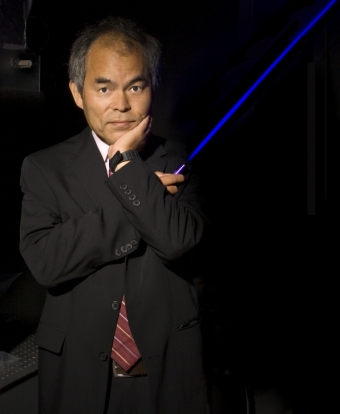
In recognition of his groundbreaking work in LED (light-emitting diode) technology, UC Santa Barbara materials professor Shuji Nakamura has been chosen as a 2015 Global Energy Prize Laureate. The prestigious Russian award “honors outstanding achievements in energy research and technology from around the world that are helping address the world’s various and pressing energy challenges.”
“I am so pleased that the Global Energy Prize committee has recognized my breakthrough work on InGaN LEDs, which has led to energy-efficient white LED lighting,” said Nakamura, who was one of three 2014 Nobel Prize winners in physics for the invention of the bright blue LED. This was an innovation that would lead to the creation of the white LED and the ability to save energy, reduce carbon emissions and provide a low energy, durable and sustainable light source for those with little or no access to electricity.
Ubiquitous in today’s electronics, from cellphones to cars, computer and television displays to interior lighting, LED technology took decades to develop, beginning with red LEDs in the 1960s, followed by green, orange and yellow. Blue LEDs were the most challenging to invent and were the remaining primary color needed to make white LED light. Nakamura took on the challenge, not only using the very promising but notoriously difficult semiconductor material gallium nitride (GaN), but also inventing a means to manufacture high-quality GaN crystals. He debuted his high-efficiency bright blue LED in 1993.
Now a professor of materials and of electrical and computer engineering at UCSB, Nakamura is also the co-director of the campus’s Solid State Lighting & Energy Electronics Center (SSLEEC), where his research focuses on growth and device fabrication of light-emitters based on gallium nitride.
Read more:



